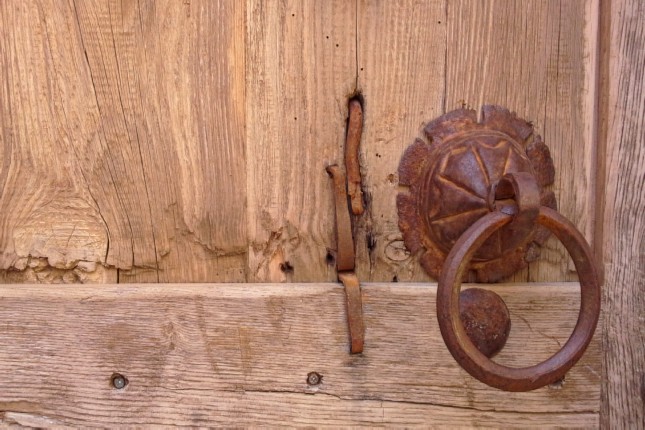Travel further south along the western coast to what is known as the "legs" of the Peloponnese to discover castles, fortresses and castle-towns scattered from hills to the most southern shores of the peninsula. Having changed hands from the Franks to the Byzantines to the Venetians and the Ottomans, every castle has distinguishing differences making each visit a unique experience.
The Castle of Kalamata - The Fort of the City
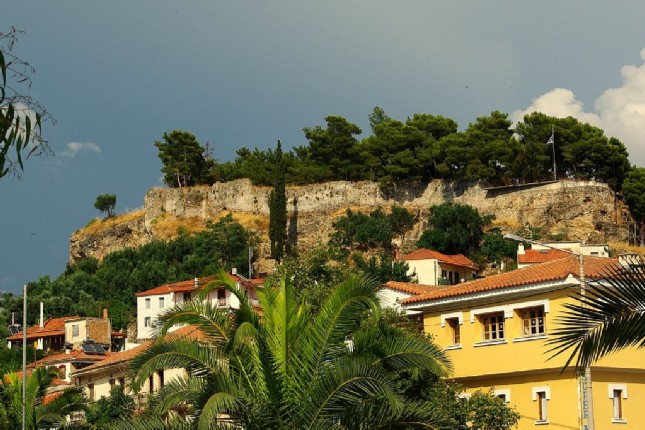
You will spot the castle of Kalamata dominating on a hill in the historic center of the city, overseeing the area in great radius, as was its original purpose. It is a 13th-century creation and belongs to the long series of castles built by the Franks in the Peloponnese in order to strengthen their sovereignty to the widest possible extent.
On the hill overlooking the historic center of Kalamata was once the Homeric Fares, the kingdom founded by Faris of Argos, son of Hermes and Danaides. At this site, a small church dedicated to the Virgin Mary "Kalomata" (meaning beautiful eyes) was built in the 6th century AD. It was thus named because the icon of the Virgin Mary there had beautiful, black eyes. It is said that the area was also named after her, Kalamata.
Later, a castle was established at the site during the Frankish domination, which was associated with the famed family of the Villehardouins, the founders of the Achaea principality. Over the centuries, the castle fell into many hands, depending on the region in question: Byzantines, Franks, Venetians, and Ottomans claimed it at various times, not surprisingly, as its position was considered particularly privileged to control the entire region.
The earthquake of 1986 made many parts of the castle dangerous, so its center is no longer accessible. The visitor can only tour around the castle inside, from where he can enjoy the magnificent view of the historic center of Kalamata. A small theater was built at the south end of the castle in 1950, which hosts performances during the summer months, as well as various other cultural events.
Methoni Castle - A Monument of Glorious Times
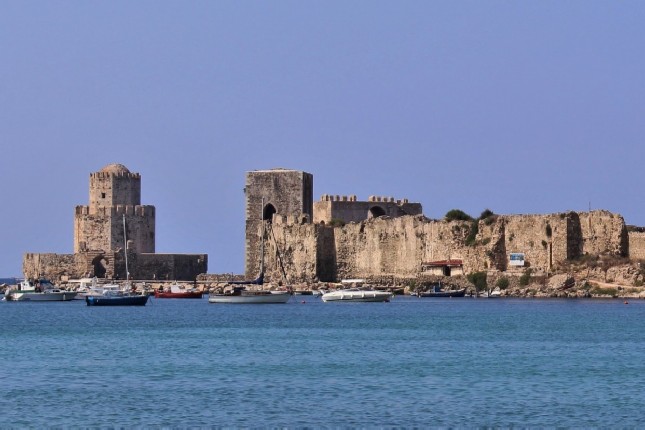
The castle of Methoni, one of the most characteristic examples of castle towns in Greece, dominates the southwestern tip of the Peloponnese. Just beside the fortified islet of Bourtzi, with which it joins through a small arched bridge.
The castle was built in 1209 AD by the Venetians. In ancient times the area was known as Pedasus, the “vine-clad” according to Homer, a name that testifies to the abundance of vineyards in the area. Homer also mentions it as one of the seven cities given to Achilles by Agamemnon in order to appease his rage and persuade him to return to battle. According to Pausanias and Strabo the town was named Mothoni, while Thucydides refers to its loose fortification during the 5th century.
The natural harbor near the castle and its strategic location have contributed to becoming a source of contention between various major powers over the centuries, which had been eyeing the region for their economic and diplomatic interests. The Franks, the Venetians and the Ottomans could not cross this focal point between the West and the East without claiming it.
Despite its ruined image, the castle still exudes memories of past glorious times, and today is a pole of attraction for thousands of tourists.
Characteristic of Methoni is the fortified islet of Bourtzi, which dominates a small islet to the south of the castle. Bourtzi was built after 1500 and occasionally served as a fortress, a prison, a lighthouse, and shelter during raids. It consists of a two-storey octagonal tower, enclosed by a low wall, ending in a circular dome. Each floor contained a parapet with battlements, while on the ground floor there was a cistern. Bourtzi connected with the rest of the castle through a small bridge.
Although ruined today, the castle of Methoni still captivates the visitor with its mysterious atmosphere. Methoni Castle stands alone, imposing, and giving the impression of a silent and unobtrusive observer.
Koroni Castle - Unique Location and History
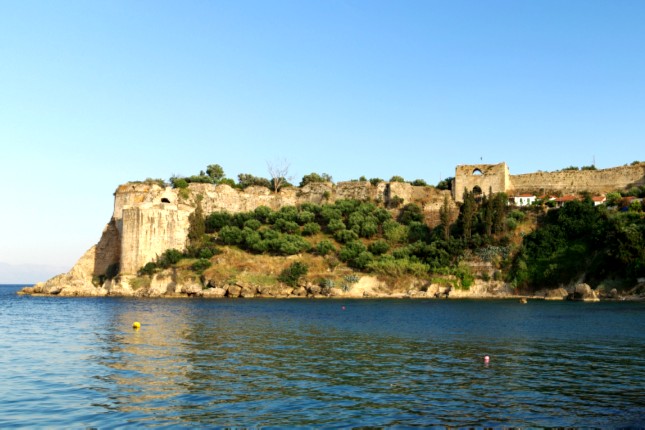
Koroni castle belongs to a long line of impressive fortifications that are scattered throughout Messinia. It still stands imposing on the top of a hill, despite the fact that it has suffered a number of catastrophes since its peak, dating from the 13th to 17th century.
The castle initially fell into the hands of the Franks during their conquest of Morea but was soon under the dominance of the Venetians, who gradually occupied almost all of the Messinian coast. Under the interests of the Venetians, the castle of Koroni flourished and became famous for its craftsmanship. Inside the castle were both Venetians and Greeks, and life was shaped around the productive and thriving city. Koroni's prosperity is also recorded in chronicles and journals of the many travelers who stopped there during their travels.
However, this was followed by a stormy period in which Koroni was constantly changing hands of conquerors, something that marked the region strongly, leaving its mark on the castle, which received numerous interventions by its successive conquerors.
The fortress is relatively large, almost triangular in shape and contains impressive square towers. Almost every corner of it contains a vault, that is a gun powder room. Inside there are several carved tombs, a Turkish hammam, Venetian cisterns, and the remains of the church of Agia Sophia, an early Christian Byzantine three-aisled basilica, probably of the 7th century. Nearby are the Church of Saint Haralambos and the Old Calendarist Monastery of John the Precursor, built at the beginning of the last century. In the middle of an enclosed space inside the castle is the so-called Resalto, a marble column in memory of the fallen Greeks of February 28, 1824, who attempted to occupy the castle from the Turks, but found a tragic death.
Mystras – The Great Natural Fort
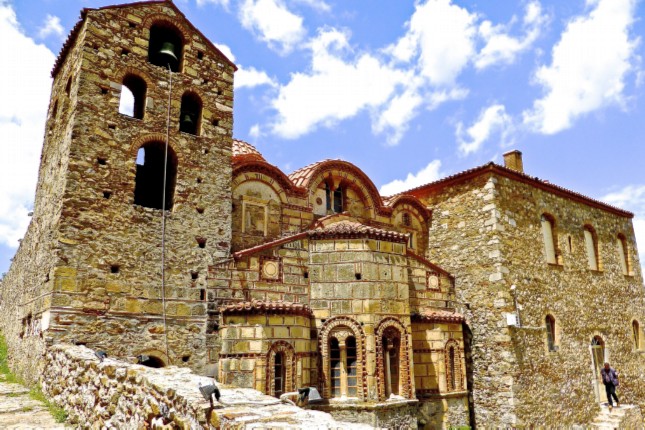
Six kilometers northwest of Sparta, at the foot of Mount Taygetus, lies the Mystras Castle. The hill, in its steep and conical shape, was called Mystras or Mizyrthas and because of its strategic location, was an important natural fort in itself.
The story of Mystras dates from the mid-13th century when the conquest of the Peloponnese was completed by the Franks. The castle was built in 1249 by Guillaume de Villehardouin at the top of the hill of the Byzantine fortress town and after the battle of Pelagonia, it fell into the hands of the Byzantines to build Mystras, which was the capital of the Despotate of Morea. The castle town continued its course until 1953, being a center of literature and the arts and housing great emperors such as Constantine Palaiologos.
Today, Mystras with its medieval castle, the Frankish Acropolis and its four fortified settlements holds houses and palaces within its walls and is famous for its late Byzantine monuments, monasteries and churches with great frescoes. The most important are the church of Hagia Sophia in the Pano Chora, the Cathedral of Agios Dimitrios, Agii Thedori, and the Odigitria in Kato Chora, and finally the churches of Perivleptos, Evaggelistrias and the church of Pantanassa in Mesochora. Since 1989, Mystras is listed as a natural heritage site on the UNESCO World Heritage List.
Traveling along the western coast to the "legs" of the Peloponnese and discover castles, fortresses and castle-towns scattered from hills to the most southern shores of the peninsula. Join the Travel Insiders on a journey to the legendary castles of the Peloponnese:
- Kalamata on Foot - A Walking Tour (half day)
- Ancient Messene & Kalamata
- Methoni, Koroni Fortresses & Pylos Town - The Strongholds of the Peloponnese
- Mystras Castle Town - Full Day Tour from Gythion with a Stop in Sparta
- Spatra - Full Day Tour from Gythion with a Stop in Mystras Castle Town

